From the Trenches
Irish Vikings
By MARLEY BROWN
Monday, December 11, 2017

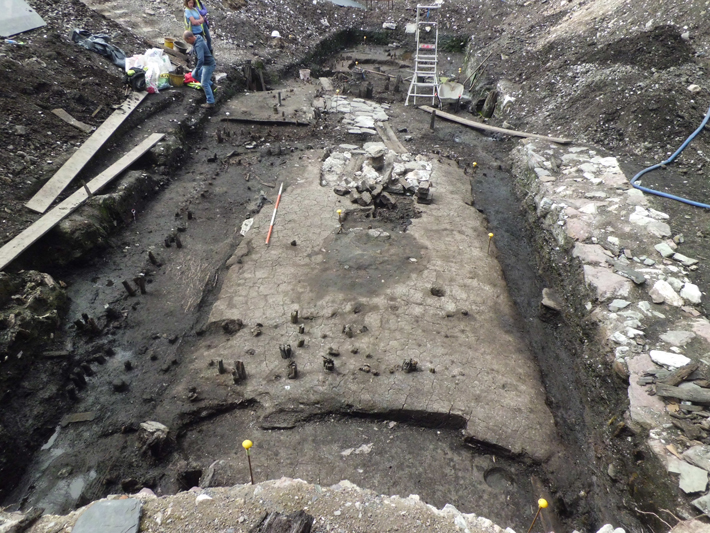 Recent excavations in Cork, Ireland, conducted ahead of construction at the former Beamish and Crawford Brewery in the city’s historic center have uncovered the remains of 19 eleventh- and twelfth-century Viking houses and more than 50 wooden artifacts. The objects, found among the house foundations, are carved in Ireland’s Viking Age Ringerike style, a fusion of Norse and native Irish cultural elements. They include a 12-inch-long weaver’s “sword” used for hammering threads and making patterns on textiles woven on a loom, as well as a decorated wooden thread winder. According to Maurice Hurley, lead archaeologist on the project, a roughly 1,000-square-foot section of the site revealed nearly 100 years’ worth of Viking-style house-building on the same lot, exposing the Scandinavian influence at the city’s core. “The Norse origins of Dublin and Waterford are better attested and better proved archaeologically than those of Cork to date,” Hurley explains. “But now I think we have a much stronger body of evidence showing that the cultural sphere of all three cities is very similar.”
Recent excavations in Cork, Ireland, conducted ahead of construction at the former Beamish and Crawford Brewery in the city’s historic center have uncovered the remains of 19 eleventh- and twelfth-century Viking houses and more than 50 wooden artifacts. The objects, found among the house foundations, are carved in Ireland’s Viking Age Ringerike style, a fusion of Norse and native Irish cultural elements. They include a 12-inch-long weaver’s “sword” used for hammering threads and making patterns on textiles woven on a loom, as well as a decorated wooden thread winder. According to Maurice Hurley, lead archaeologist on the project, a roughly 1,000-square-foot section of the site revealed nearly 100 years’ worth of Viking-style house-building on the same lot, exposing the Scandinavian influence at the city’s core. “The Norse origins of Dublin and Waterford are better attested and better proved archaeologically than those of Cork to date,” Hurley explains. “But now I think we have a much stronger body of evidence showing that the cultural sphere of all three cities is very similar.”
Front Row Seats
By ZACH ZORICH
Monday, December 11, 2017
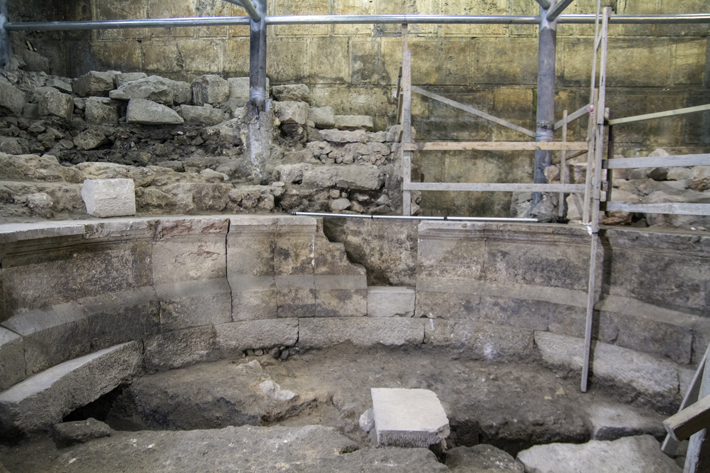
Excavations at the Western Wall in Jerusalem led by Joe Uziel and Avi Solomon of the Israel Antiquities Authority have uncovered a Roman-era building that may have been used to host performances or political assemblies. The building may date to the mid-second century A.D. when the emperor Hadrian was having the city rebuilt after the Roman army destroyed it and the Second Temple in A.D. 70. The newly discovered building probably seated about 200 people and was located under what is now called Wilson’s Arch, after the nineteenth-century explorer who identified it. The arch was part of a causeway that led into the temple and may have had acoustic properties that made it an attractive location for public speaking or singing.
Assyrian Archivists
By ERIC A. POWELL
Monday, December 11, 2017
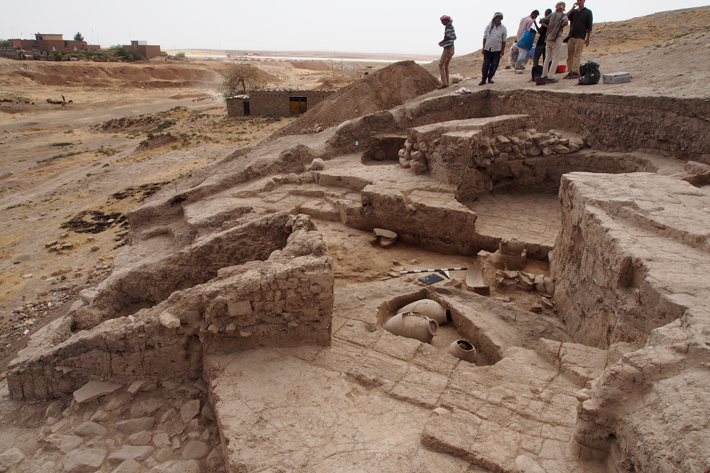
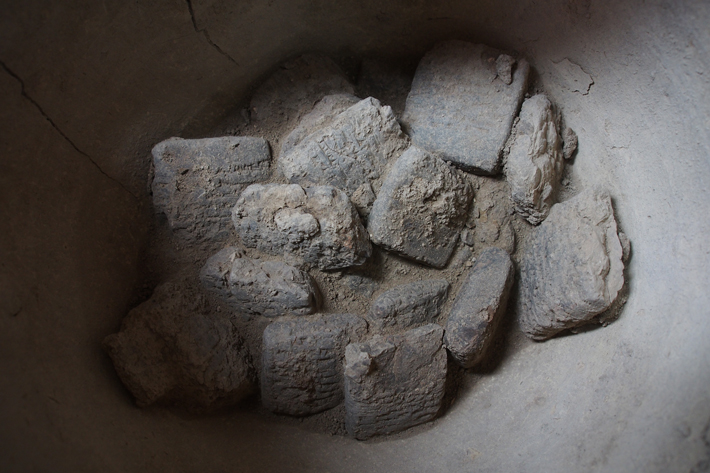 Archaeologists excavating a Bronze Age Assyrian city in Iraqi Kurdistan have unearthed a cache of almost 100 cuneiform tablets. Led by the University of Tübingen’s Peter Pfälzner, the team discovered the archive under the remains of a large public building that had been deliberately destroyed in antiquity, most likely during an enemy attack. Dating to about 1250 B.C., most of the tablets were in a ceramic pot that had been buried in a thick layer of clay, probably after the city was sacked. “We think the tablets were originally stored in that building, and that they remained in their original position after the structure was destroyed,” says Pfälzner. “They could have protected them somewhere else, so there must have been some importance behind keeping the archive there.” Most of the tablets are badly worn and have not yet been deciphered, but one fragment that has been translated mentions the temple of Gula, a Mesopotamian goddess of healing, a hint that the building may have been that deity’s sanctuary.
Archaeologists excavating a Bronze Age Assyrian city in Iraqi Kurdistan have unearthed a cache of almost 100 cuneiform tablets. Led by the University of Tübingen’s Peter Pfälzner, the team discovered the archive under the remains of a large public building that had been deliberately destroyed in antiquity, most likely during an enemy attack. Dating to about 1250 B.C., most of the tablets were in a ceramic pot that had been buried in a thick layer of clay, probably after the city was sacked. “We think the tablets were originally stored in that building, and that they remained in their original position after the structure was destroyed,” says Pfälzner. “They could have protected them somewhere else, so there must have been some importance behind keeping the archive there.” Most of the tablets are badly worn and have not yet been deciphered, but one fragment that has been translated mentions the temple of Gula, a Mesopotamian goddess of healing, a hint that the building may have been that deity’s sanctuary.
Unknown Elites
By JARRETT A. LOBELL
Monday, December 11, 2017

Gabriel Prieto originally planned to excavate next to a church in Huanchaco, on Peru’s north coast. Three days before he was to begin, he was notified that it was no longer possible—Pope Francis would be visiting in January 2018 and preparations needed to be made. After first digging in the middle of a street, where he found mostly looted burials, eventually Prieto secured a new site in a nearby schoolyard. There, in layers undisturbed by either looters or modern activity, he excavated a cemetery more than 10 feet deep in which he found evidence of some of the least-known periods of ancient Peruvian history. “This unplanned discovery proved to be the best discovery I have made in the last five years,” says Prieto.
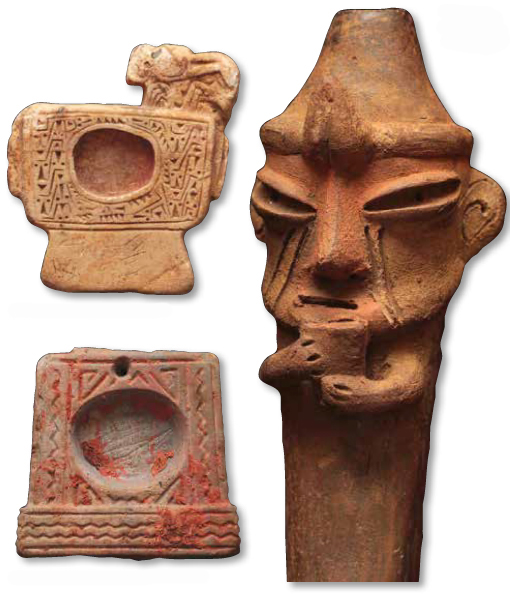 Some burials date to the Gallinazo or Viru period (200 B.C.–A.D. 550), a time when locals competed with the Moche for territory and resources, explains Prieto. The richest deposits date to the Salinar period (400–200 B.C.). These contain gold artifacts, ritual paraphernalia, and a stone mace head, as well as skeletons exhibiting severe injuries. “Salinar was a period of violence and social conflict,” says Prieto, “but this unusual concentration of high-status burials suggests that even at fishing settlements like Huanchaco, social differentiation was evident.”
Some burials date to the Gallinazo or Viru period (200 B.C.–A.D. 550), a time when locals competed with the Moche for territory and resources, explains Prieto. The richest deposits date to the Salinar period (400–200 B.C.). These contain gold artifacts, ritual paraphernalia, and a stone mace head, as well as skeletons exhibiting severe injuries. “Salinar was a period of violence and social conflict,” says Prieto, “but this unusual concentration of high-status burials suggests that even at fishing settlements like Huanchaco, social differentiation was evident.”
Underground Party
By ERIC A. POWELL
Monday, December 11, 2017
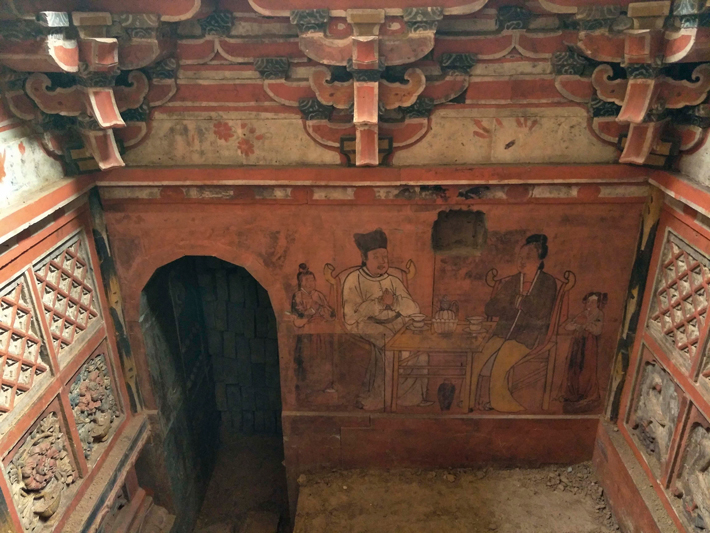
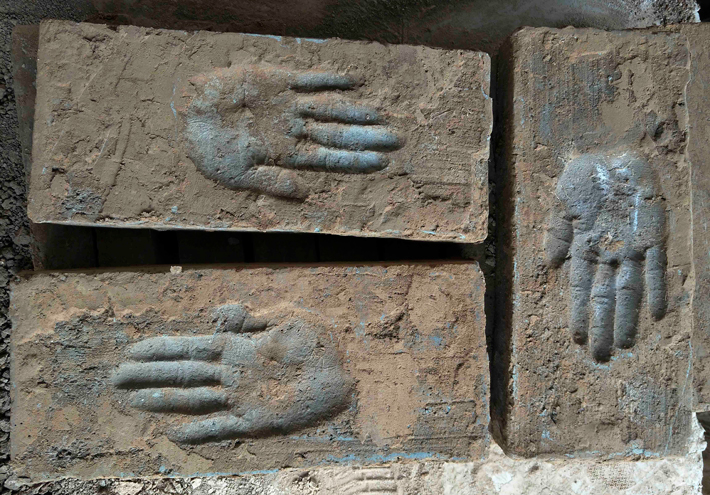 A villager in the northern Chinese province of Shanxi was renovating a house when he was shocked to discover it was built over an ancient tomb. Archaeologists called in to excavate the site dated it to the Song Dynasty (A.D. 960–1127) and found that the burial chamber had been decorated with tile carvings depicting horses and flying deer, as well as an elaborate fresco of a lavish family feast. “It’s a glimpse of real life during the Song Dynasty,” says Zhong Longgang of the Shanxi Provincial Institute of Archaeology, who supervised the dig. “We think the party fresco depicts the people who were actually buried in the tomb, and it gives us a look at the clothing, diet, and etiquette of the period.” Many of the tiles recovered from the tomb have impressions of palm prints, which may have served as the signatures of the artisans who made them.
A villager in the northern Chinese province of Shanxi was renovating a house when he was shocked to discover it was built over an ancient tomb. Archaeologists called in to excavate the site dated it to the Song Dynasty (A.D. 960–1127) and found that the burial chamber had been decorated with tile carvings depicting horses and flying deer, as well as an elaborate fresco of a lavish family feast. “It’s a glimpse of real life during the Song Dynasty,” says Zhong Longgang of the Shanxi Provincial Institute of Archaeology, who supervised the dig. “We think the party fresco depicts the people who were actually buried in the tomb, and it gives us a look at the clothing, diet, and etiquette of the period.” Many of the tiles recovered from the tomb have impressions of palm prints, which may have served as the signatures of the artisans who made them.
Advertisement
Advertisement
IN THIS ISSUE
From the Trenches
The Secrets of Sabotage
Off the Grid
A Monumental Find
The Pink Standard
Hot Property
Spotting the Sun
Bronze Beauty
Masked Man
Queen of the Old Kingdom
Underground Party
Assyrian Archivists
Unknown Elites
Front Row Seats
Irish Vikings
World Roundup
Canadian model airplane, ball games in Belize, Roman Tunisia, Arizona turquoise mines, and a Rwandan palace
Artifact
A dog that heals
Advertisement

Recent Issues
-
 May/June 2024
May/June 2024
-
 March/April 2024
March/April 2024
-
 January/February 2024
January/February 2024
-
 November/December 2023
November/December 2023
-
 September/October 2023
September/October 2023
-
 July/August 2023
July/August 2023
-
 May/June 2023
May/June 2023
-
 March/April 2023
March/April 2023
-
 January/February 2023
January/February 2023
-
 November/December 2022
November/December 2022
-
 September/October 2022
September/October 2022
-
 July/August 2022
July/August 2022
-
 May/June 2022
May/June 2022
-
 March/April 2022
March/April 2022
-
 January/February 2022
January/February 2022
-
 November/December 2021
November/December 2021
-
 September/October 2021
September/October 2021
-
 July/August 2021
July/August 2021
-
 May/June 2021
May/June 2021
-
 March/April 2021
March/April 2021
-
 January/February 2021
January/February 2021
-
 November/December 2020
November/December 2020
-
 September/October 2020
September/October 2020
-
 July/August 2020
July/August 2020
-
 May/June 2020
May/June 2020
-
 March/April 2020
March/April 2020
-
 January/February 2020
January/February 2020
-
 November/December 2019
November/December 2019
-
 September/October 2019
September/October 2019
-
 July/August 2019
July/August 2019
-
 May/June 2019
May/June 2019
-
 March/April 2019
March/April 2019
-
 January/February 2019
January/February 2019
-
 November/December 2018
November/December 2018
-
 September/October 2018
September/October 2018
-
 July/August 2018
July/August 2018
-
 May/June 2018
May/June 2018
-
 March/April 2018
March/April 2018
-
 January/February 2018
January/February 2018
-
 November/December 2017
November/December 2017
-
 September/October 2017
September/October 2017
-
 July/August 2017
July/August 2017
-
 May/June 2017
May/June 2017
-
 March/April 2017
March/April 2017
-
 January/February 2017
January/February 2017
-
 November/December 2016
November/December 2016
-
 September/October 2016
September/October 2016
-
 July/August 2016
July/August 2016
-
 May/June 2016
May/June 2016
-
 March/April 2016
March/April 2016
-
 January/February 2016
January/February 2016
-
 November/December 2015
November/December 2015
-
 September/October 2015
September/October 2015
-
 July/August 2015
July/August 2015
-
 May/June 2015
May/June 2015
-
 March/April 2015
March/April 2015
-
 January/February 2015
January/February 2015
-
 November/December 2014
November/December 2014
-
 September/October 2014
September/October 2014
-
 July/August 2014
July/August 2014
-
 May/June 2014
May/June 2014
-
 March/April 2014
March/April 2014
-
 January/February 2014
January/February 2014
-
 November/December 2013
November/December 2013
-
 September/October 2013
September/October 2013
-
 July/August 2013
July/August 2013
-
 May/June 2013
May/June 2013
-
 March/April 2013
March/April 2013
-
 January/February 2013
January/February 2013
-
 November/December 2012
November/December 2012
-
 September/October 2012
September/October 2012
-
 July/August 2012
July/August 2012
-
 May/June 2012
May/June 2012
-
 March/April 2012
March/April 2012
-
 January/February 2012
January/February 2012
-
 November/December 2011
November/December 2011
-
 September/October 2011
September/October 2011
-
 July/August 2011
July/August 2011
-
 May/June 2011
May/June 2011
-
 March/April 2011
March/April 2011
-
 January/February 2011
January/February 2011
Advertisement






